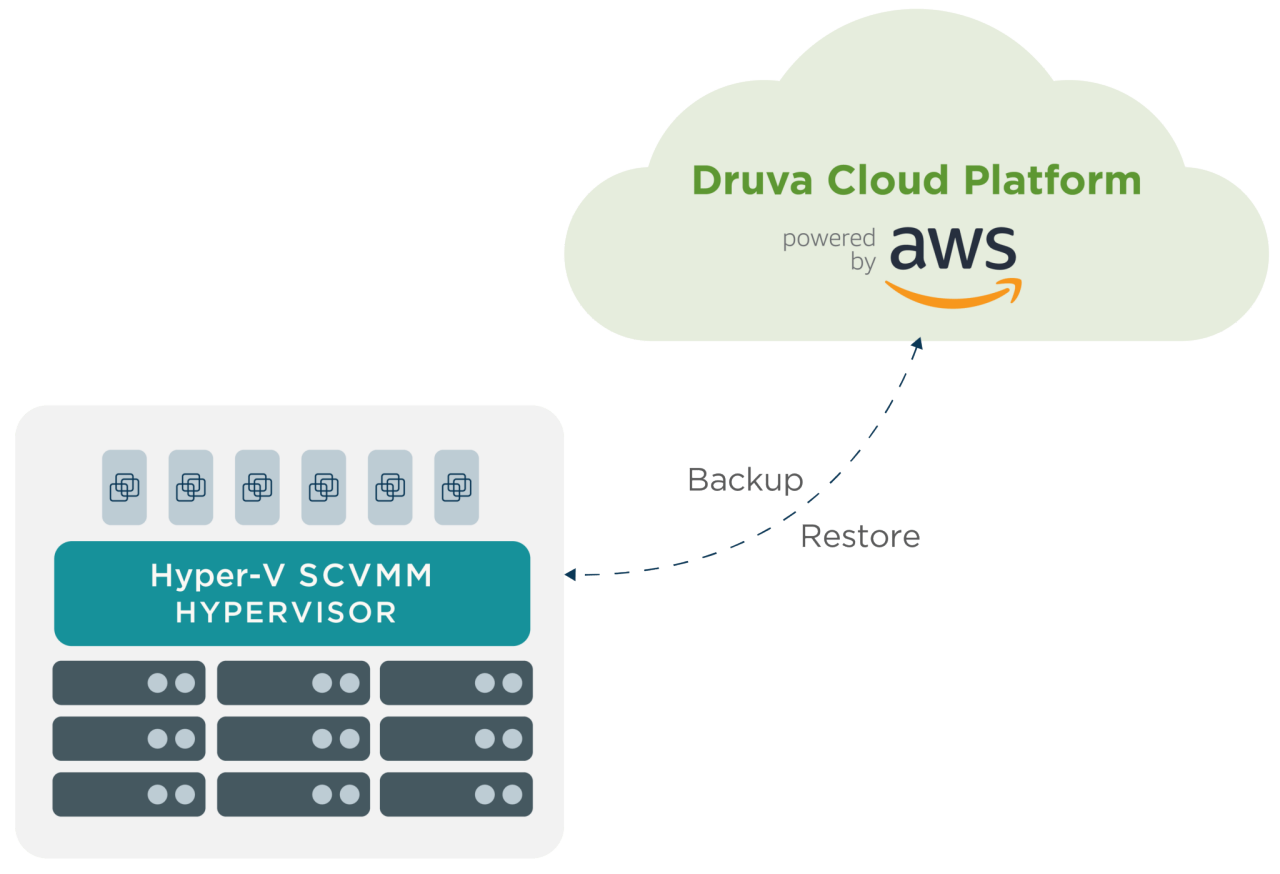For companies that want to protect their Hyper-V environments and the ever-growing amount of structured and unstructured data that reside in them, there still too often exists an ineffective, on-premises secondary storage architecture that has been created to try and meet their needs. This architecture is complex and comes with heavy administrative overhead and infrastructure costs. To address this issue, the virtual machine (VM) backup capabilities of the Druva Cloud Platform have been extended to support Microsoft Hyper-V VMs.
According to IDC, Hyper-V now accounts for more than 40% market share.
Druva’s Hyper-V environment support was designed to address the following needs:
- Hyper-V host-level or image-level backups —A legacy guest operating system (OS) often experiences problems with agent-based backups, such as upgrades, troubleshooting failures, and guest OS overhead, especially in large environments.
- Simple recovery of full VMs — With legacy solutions, the full VM recovery process is complex and time-consuming. Administrators are often required to launch a completely new VM, install the original applications, restore the system state, and then finally restore the application data.
- Application consistency — Previously adopted tools often employ OS crash consistency, which is not sufficient. Application consistency is what’s needed and can be maintained by integrating with Hyper-V VSS services within the guest OS during the backup.
- Seamless scalability — As data grows in size, the backup windows need to adapt. Older solutions will employ static backup windows, which don’t address this reality. A combination of forever incremental backups and global deduplication ensures that the data footprint over the network is smaller and backups are faster. This can be further improved by leveraging Resilient Change Tracking (RCT) for Win 2016.
Listening to Our Customers
The issues listed above were evident at one of Druva’s larger customers, the Port of New Orleans, which is at the heart of one of the world’s busiest port systems. The port’s aging backup infrastructure for its Hyper-V environment was a legacy, manual-intensive system that was inefficient on multiple levels. It could take hours or, in some cases, days to retrieve files. Additionally, because the data was not centralized, employees had to spend valuable time moving around to various off-site locations to get their jobs done.
In the past, “a typical day at the Port of New Orleans before was spending a lot of time with aging infrastructure.” said David Cordell, Chief Technology Officer of the port. “For our backup infrastructure, it would take hours, in some cases days to retrieve files. We would have to move from one system to another system before we could just restore it to its original location.”
Druva’s Cloud Approach for Hyper-V Environments
The Druva Cloud Platform provides easily consumable cloud scalability combined with a true pay-as-you SaaS consumption model. We’ve learned from our customers that they need critical capabilities like host-level and image-level backups, Hyper-V VSS integration services and forever incremental backups, and global deduplication across on-premises infrastructure and cloud VMs. We ensure that your data footprint over the network is smaller and backups are faster.
The Druva Hyper-V agent resides on the Hyper-V host and performs image-level backups of the VMs, which eliminates the need to install the agent software on each guest OS.
The key features include:
- Forever incremental backups with source-side global deduplication
- Application-consistent backups through integration with Microsoft VSS framework
- Support for all Hyper-V storage deployments including the local and cluster-shared volumes and Server Message Block (SMB)
- Flexible restore options, such as restoring the entire virtual machines or individual disks and restoring data to the original host or to an alternate host

